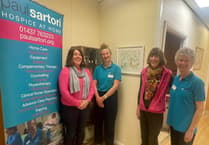Sir,
I am sorry to trouble you, but I would appreciate a little of your space in the hope of achieving a bit of peace and quiet in my old age. I refer to a notice board recently erected in the car park at Amroth by the National Park. It includes one brief passage of incorrect nonsense about the history of the area which has obviously been taken from the rubbish originally produced for the once-upon-a-time disaster known as SPARC, by an alleged, but anonymous 'professional historian'.
Possibly because I know as much as some about the history of the area, and maybe a bit more than a few others, visitors of an enquiring turn of mind are told to come and ask me. Whilst I always try to be as helpful as possible, they would not thank me for telling them they could find it all in my two books, 'Amroth: a Brief History' and 'From Amroth to Utah'. Out of kindness of heart, therefore, and not because I have much more love for the National Park than any of us did for the lately unlamented SPARC, I have sent them a correct version.
For those of your readers who are likely to be interested, the correct historical account, as given to the National Park, is as follows:
a place of sanctuary
'The original Norman castle stood at the top of the hill at Amroth Green to the east of the present day St. Elidyr's Church. Earwear mansion was what is now known as Amroth Castle. In 1490, Squire John Elliott of the strong Catholic family of Earwear, who had built his own chapel at the mansion in pre-Reformation days when the whole country was still Catholic, initiated the proposal to build the present parish church with the stones available from the ruins of the old castle at Amroth Green. The stone kneeling steps were for those who clung to the Catholic belief that they should kneel at prayer before entering the church. A descendant of John Elliott built a school at Earwear in 1713. At the end of the 18th Century, the mansion at Earwear was bought by Captain James Ackland, brother of Major Dudley Ackland, one of the central figures in the Fishguard invasion. He carried out vast structural alterations to the mansion, and its appearance, altered out of all recognition with its castellation, gave rise to the name being changed to Amroth Castle."
How long it will take for them to put it right remains to be seen, as the monkey said when he came out from behind the kitchen door.
Roscoe Howells,
Glan-Y-Môr,
Amroth.



